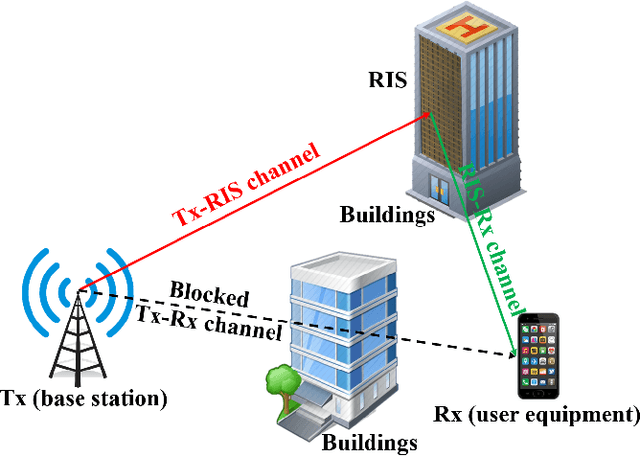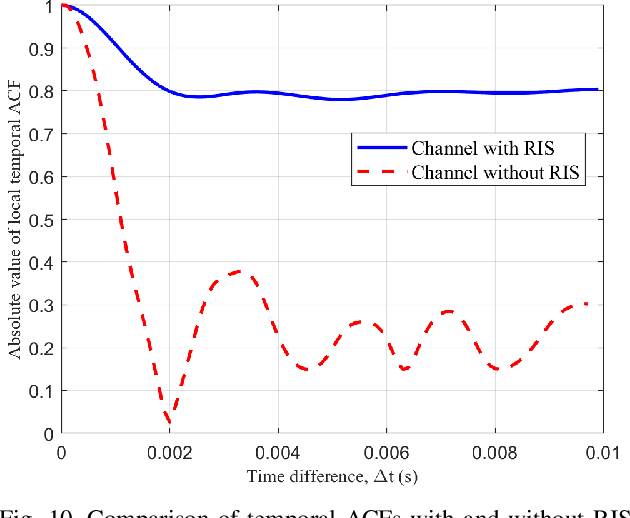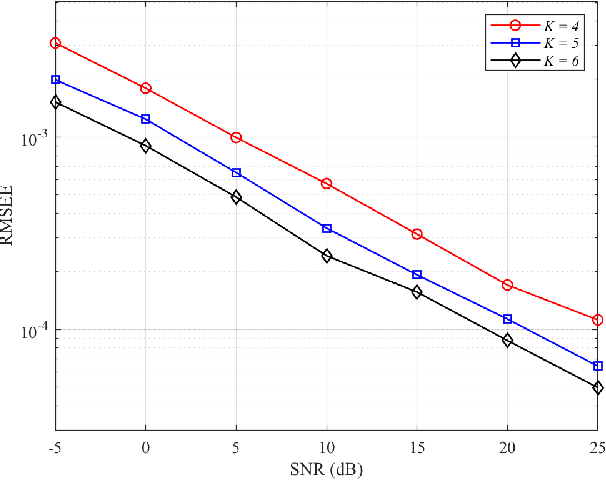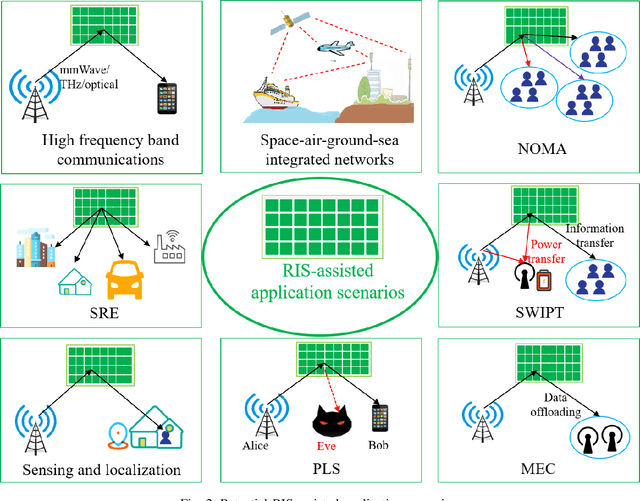Zhimeng Zhong
Electromagnetic-Compliant Channel Modeling and Performance Evaluation for Holographic MIMO
Jan 13, 2023



Abstract:Recently, the concept of holographic multiple-input multiple-output (MIMO) is emerging as one of the promising technologies beyond massive MIMO. Many challenges need to be addressed to bring this novel idea into practice, including electromagnetic (EM)-compliant channel modeling and accurate performance evaluation. In this paper, an EM-compliant channel model is proposed for the holographic MIMO systems, which is able to model both the characteristics of the propagation channel and the non-ideal factors caused by mutual coupling at the transceivers, including the antenna pattern distortion and the decrease of antenna efficiency. Based on the proposed channel model, a more realistic performance evaluation is conducted to show the performance of the holographic MIMO system in both the single-user and the multi-user scenarios. Key challenges and future research directions are further provided based on the theoretical analyses and numerical results.
Reconfigurable intelligent surfaces: Channel characterization and modeling
Jun 06, 2022



Abstract:Reconfigurable intelligent surfaces (RISs) are two dimensional (2D) metasurfaces which can intelligently manipulate electromagnetic waves by low-cost near passive reflecting elements. RIS is viewed as a potential key technology for the sixth generation (6G) wireless communication systems mainly due to its advantages in tuning wireless signals, thus smartly controlling propagation environments. In this paper, we aim at addressing channel characterization and modeling issues of RIS-assisted wireless communication systems. At first, the concept, principle, and potential applications of RIS are given. An overview of RIS based channel measurements and experiments is presented by classifying frequency bands, scenarios, system configurations, RIS constructions, experiment purposes, and channel observations. Then, RIS based channel characteristics are studied, including reflection and transmission, Doppler effect and multipath fading mitigation, channel reciprocity, channel hardening, rank improvement, far field and near field, etc. RIS based channel modeling works are investigated, including largescale path loss models and small-scale multipath fading models. At last, future research directions related to RIS-assisted channels are also discussed.
Deep Transfer Learning Based Downlink Channel Prediction for FDD Massive MIMO Systems
Jan 31, 2020



Abstract:Artificial intelligence (AI) based downlink channel state information (CSI) prediction for frequency division duplexing (FDD) massive multiple-input multiple-output (MIMO) systems has attracted growing attention recently. However, existing works focus on the downlink CSI prediction for the users under a given environment and is hard to adapt to users in new environment especially when labeled data is limited. To address this issue, we formulate the downlink channel prediction as a deep transfer learning (DTL) problem, where each learning task aims to predict the downlink CSI from the uplink CSI for one single environment. Specifically, we develop the direct-transfer algorithm based on the fully-connected neural network architecture, where the network is trained on the data from all previous environments in the manner of classical deep learning and is then fine-tuned for new environments. To further improve the transfer efficiency, we propose the meta-learning algorithm that trains the network by alternating inner-task and across-task updates and then adapts to a new environment with a small number of labeled data. Simulation results show that the direct-transfer algorithm achieves better performance than the deep learning algorithm, which implies that the transfer learning benefits the downlink channel prediction in new environments. Moreover, the meta-learning algorithm significantly outperforms the direct-transfer algorithm in terms of both prediction accuracy and stability, which validates its effectiveness and superiority.
 Add to Chrome
Add to Chrome Add to Firefox
Add to Firefox Add to Edge
Add to Edge